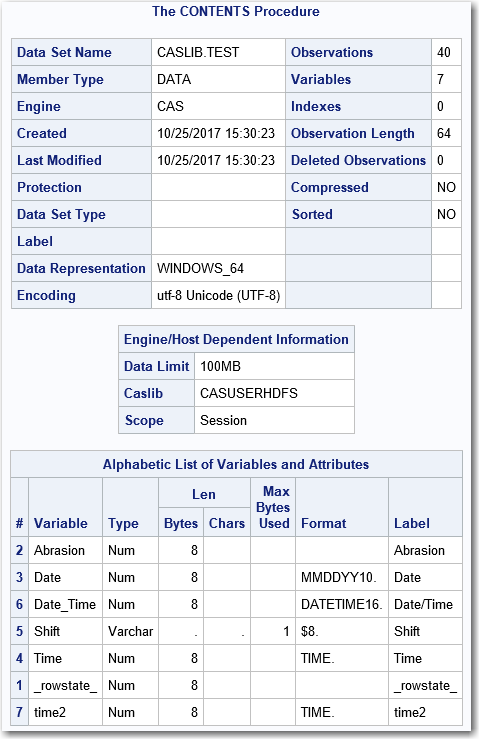

- #Sas jmp 13 import data portable
- #Sas jmp 13 import data code
- #Sas jmp 13 import data Pc
- #Sas jmp 13 import data windows
When importing to Genstat you are prompted to select the required notebook. SigmaPlot 8/9 files may contain several notebooks. However, Genstat will only import conventional one-to-one value labels from SAS.
#Sas jmp 13 import data code
SAS catalogue files not only support conventional value labels (the one-to-one mapping of a string to a single number), but also the mapping of a range of numeric values to a single string (for example, zip code mapped to state). In this case, the file will have the name sas_fmts.sas7bdat and it will be found in the same directory as the import file.

This procedure creates a SAS file in the directory ‘’ that has the format information for each SAS data file. Where ‘’ is the directory that contains your import data file. Proc format library = mylib cntlout = mylib.sas_fmts To create a file to include the PROC FORMAT statement for Genstat to import the SAS value labels, you will need run the following small program in SAS: The selected file will be used to transfer your variable labels. By default, Genstat will look for a file called sas_fmts.sas7bat in the same directory as the import file. If you respond with Yes, it will then prompt for a file containing the value labels created with the PROC FORMAT statement (as below). Answer Yes to the query ‘ Do you want to specify a PROC FORMAT file for the dataset?‘ if you have created this file for the value labels. You will be prompted for this format file when opening a SAS file. This file contains the same information as the catalogue file, but is in a more convenient format for Genstat to read. The format of this catalogue file is undocumented, therefore, Genstat goes through the “front door” and rather than reading directly from the catalogue file, reads value labels from a new file that you create using SAS itself. SAS, unlike other systems, stores value labels as custom formats, in a separate catalogue file. Genstat supports the import of SAS value labels for SAS v7-9 files. XLSX file format, and then this will not happen. However, if using Excel 2010, it is always best to use the. Saving the file with Excel will stop this happening in the future. If you click this warning and then click the Edit anyway button, the file will open as expected, with no further issues. You will get a warning saying: Office has detected a problem with this file. XLS file (the Excel 95-2003 file format) that was not saved by Excel. XLS files produced by Genstat into Excel 2010 or laterĮxcel 2010 or later always generates a warning on opening a. Note that if the format you are looking for does not appear in the above list, please let us know at Additional information R/QTL separate genotype files (csvs and csvsr)ĬSPro data dictionaries (along with a CSPro data file) Statistica version 5-8 worksheet files (import only)

S+ data frames and matrices (PC and Unix)
#Sas jmp 13 import data Pc
SAS JMP data sets for PC or Mac (import only)
#Sas jmp 13 import data windows
SAS windows data sets version 6.07-6.12 (import only) SAS DOS data sets version 6.03-6.04 (import only)
#Sas jmp 13 import data portable
SPSS portable ASCII data sets (import only) Gauss v96 data set files (PC and Unix) (import only) Microsoft Excel 2007, 20 macro enabled files Microsoft Excel files, in BIFF2-8 format (includes Excel 95, 97, 2000 and XP) The following table provides a list of the data formats that Genstat supports. In addition to Genstat’s own spreadsheet data formats, Genstat supports a wide range of external data file formats for import and export.


 0 kommentar(er)
0 kommentar(er)
